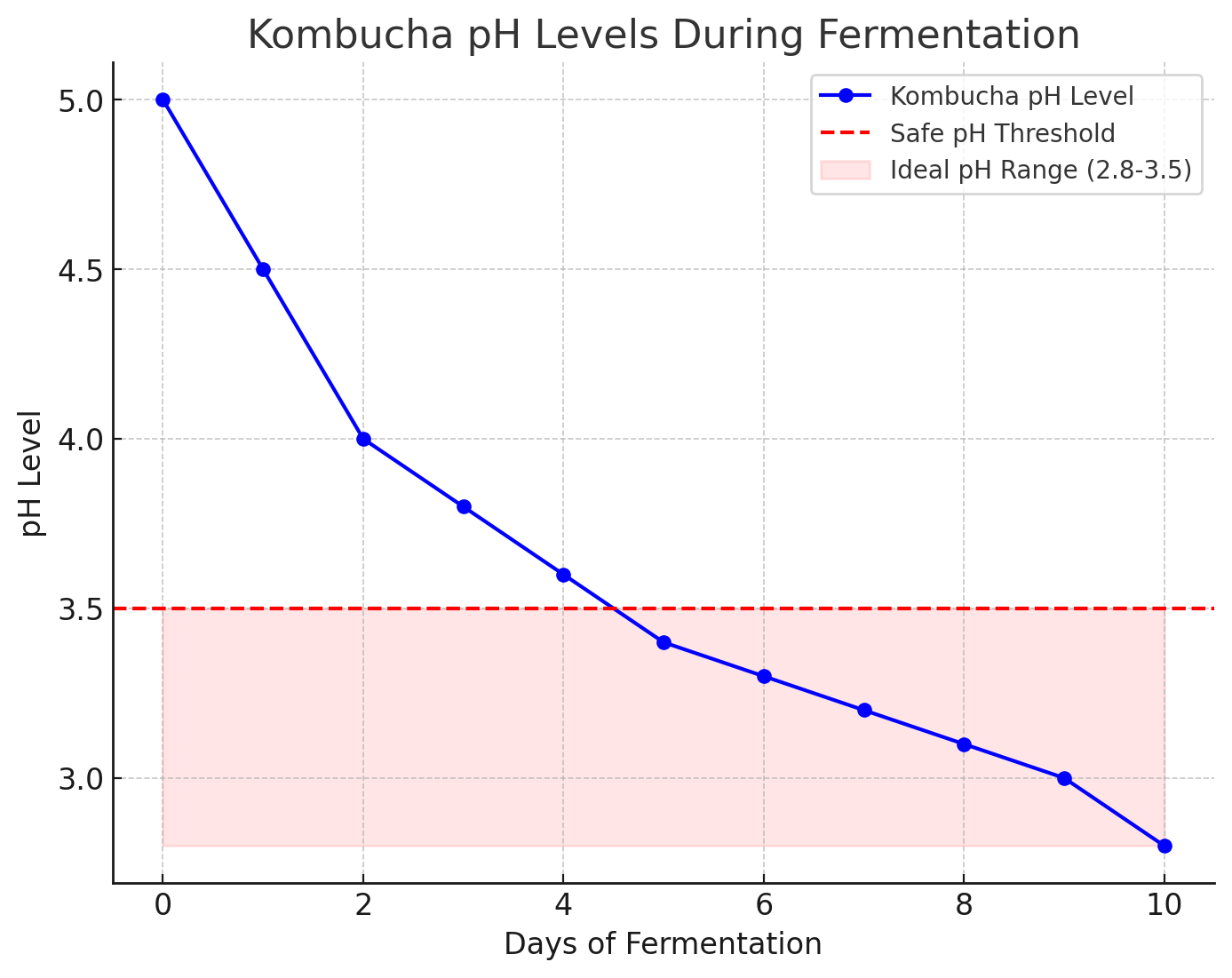
Kombucha Ph- chart
Understanding Kombucha pH Levels During Fermentation
Kombucha is a popular fermented tea known for its health benefits, particularly for gut health. One of the key indicators of a successful fermentation process is the change in pH levels. Monitoring the pH of kombucha is crucial, as it ensures that the fermentation is proceeding safely and that the final product is both delicious and free from harmful bacteria.
What Happens to pH During Kombucha Fermentation?
At the start of the fermentation process, the pH of kombucha is typically around 5.0. As the SCOBY (Symbiotic Culture of Bacteria and Yeast) ferments the tea and sugar, the pH gradually decreases, creating the tangy, acidic flavor that kombucha is known for. After several days of fermentation, the pH will drop into the ideal range of 2.8 to 3.5.
The following chart illustrates how the pH of kombucha changes over a typical 10-day fermentation period:

Why pH Matters in Kombucha
- Safety: A pH below 3.5 is considered safe for kombucha. This acidic environment inhibits the growth of harmful pathogens and ensures the drink remains safe to consume.
- Flavor: As the pH decreases, the flavor of the kombucha becomes more tart and tangy. Monitoring pH allows brewers to stop fermentation at the desired level of acidity.
- Ideal Range: The ideal pH range for kombucha is between 2.8 and 3.5. A pH lower than 2.8 may result in overly sour kombucha, while a pH above 3.5 might indicate incomplete fermentation or potential safety risks.
How to Monitor Kombucha pH
To monitor the pH of kombucha, you can use pH strips or a digital pH meter. It’s a good idea to check the pH regularly throughout the fermentation process, especially if you’re trying to hit a specific flavor profile.
By understanding and tracking pH levels during fermentation, you can ensure that your kombucha is both safe and perfectly tangy, with just the right amount of acidity!